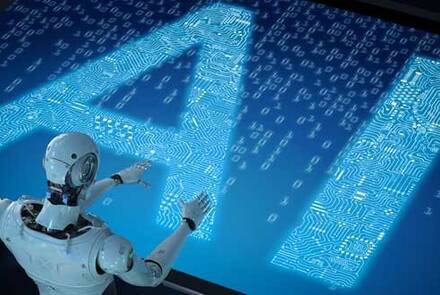Enhancing MMIS Security and Transparency with Blockchain Technology
The modernization of Medicaid Management Information Systems (MMIS) is crucial for improving the efficiency, security, and transparency of Medicaid programs. One of the most promising technologies to achieve these goals is blockchain. By leveraging the inherent strengths of blockchain technology, MMIS can enhance security, ensure transparent data sharing, and reduce fraud. This blog post explores how blockchain can be integrated into MMIS and the benefits it offers for Medicaid programs.
Understanding Blockchain Technology
Blockchain is a decentralized, distributed ledger technology that records transactions across many computers in such a way that the registered transactions cannot be altered retroactively. This ensures data integrity and transparency, making blockchain an ideal technology for secure and transparent data management.
Key Features of Blockchain
- Decentralization: Unlike traditional centralized databases, blockchain operates on a decentralized network, reducing the risk of a single point of failure.
- Immutability: Once recorded, data on the blockchain cannot be changed or deleted, ensuring the integrity of the records.
- Transparency: Blockchain transactions are visible to all participants in the network, promoting transparency.
- Security: Advanced cryptographic techniques ensure the security and privacy of data on the blockchain.
Enhancing Security in MMIS
Security is a paramount concern in the management of Medicaid information due to the sensitive nature of patient data and the potential for fraudulent activities. Blockchain technology offers several advantages that can enhance the security of MMIS.
Data Integrity
Blockchain’s immutability ensures that once data is recorded, it cannot be altered or tampered with. This feature is particularly valuable for maintaining the integrity of patient records and transaction logs, providing a reliable audit trail for all activities.
Implementation:
- Immutable Records: Use blockchain to store critical patient information and transaction logs. Any updates to records can be appended as new blocks, preserving the history of changes.
Access Control and Authentication
Blockchain can enhance access control mechanisms by providing a decentralized and tamper-proof method for managing permissions and identities.
Implementation:
- Decentralized Identity Management: Implement blockchain-based identity management systems to ensure that only authorized individuals can access sensitive information. Use smart contracts to automate access control policies.
Data Encryption
Blockchain uses advanced cryptographic algorithms to secure data. This ensures that even if data is intercepted, it cannot be read without the appropriate decryption key.
Implementation:
- End-to-End Encryption: Encrypt data before storing it on the blockchain and use cryptographic keys to control access. Ensure that keys are securely managed and distributed.
Ensuring Transparency in MMIS
Transparency is essential for building trust among stakeholders and ensuring accountability. Blockchain’s inherent transparency can significantly enhance the transparency of MMIS.
Transparent Transactions
All transactions on a blockchain are visible to participants, allowing for real-time auditing and verification.
Implementation:
- Transparent Ledger: Use blockchain to record all transactions related to Medicaid claims, payments, and updates to patient records. Ensure that authorized stakeholders can view and verify transactions in real-time.
Auditable Trails
Blockchain provides a complete and unalterable audit trail of all transactions, making it easier to track and verify activities.
Implementation:
- Audit Logs: Implement blockchain-based audit logs for all MMIS activities. Use these logs to monitor compliance, detect anomalies, and conduct audits efficiently.
Enhancing Interoperability in MMIS
Interoperability is crucial for ensuring seamless data exchange between different systems and stakeholders. Blockchain can facilitate interoperability by providing a common platform for data sharing.
Standardized Data Sharing
Blockchain can standardize data formats and protocols, ensuring that different systems can communicate and exchange data effectively.
Implementation:
- Common Data Standards: Develop and adopt standardized data formats for storing and sharing information on the blockchain. Use these standards to ensure compatibility between different systems and platforms.
Secure Data Exchange
Blockchain ensures secure and transparent data exchange between different parties, reducing the risk of data breaches and unauthorized access.
Implementation:
- Interoperable Platforms: Use blockchain to enable secure data exchange between MMIS and other healthcare systems, such as Electronic Health Records (EHR) systems and Health Information Exchanges (HIEs). Ensure that data is encrypted and access-controlled.
Reducing Fraud in MMIS
Fraudulent activities in Medicaid programs can lead to significant financial losses and undermine the integrity of the healthcare system. Blockchain’s transparency and immutability can help reduce fraud by ensuring that all transactions are verifiable and tamper-proof.
Fraud Detection and Prevention
Blockchain can detect and prevent fraudulent activities by providing a transparent and immutable record of all transactions.
Implementation:
- Real-time Monitoring: Implement real-time monitoring and analysis of blockchain transactions to detect suspicious activities. Use machine learning algorithms to identify patterns indicative of fraud.
- Smart Contracts: Use smart contracts to automate and enforce rules for Medicaid claims and payments. Ensure that these contracts are transparent and auditable.
Claim Verification
Blockchain can streamline the verification process for Medicaid claims, ensuring that only legitimate claims are processed and paid.
Implementation:
- Automated Verification: Use blockchain to automate the verification of Medicaid claims. Store claim information on the blockchain and use smart contracts to validate and process claims.
Conclusion
Blockchain technology offers significant potential for enhancing the security, transparency, and interoperability of Medicaid Management Information Systems. By leveraging blockchain’s decentralized, immutable, and transparent nature, MMIS can ensure secure data sharing, reduce fraud, and build trust among stakeholders. The integration of blockchain into MMIS requires careful planning and collaboration among healthcare providers, technology vendors, and regulatory bodies. However, the benefits it brings to Medicaid programs make it a worthwhile investment.
As blockchain technology continues to evolve, its applications in healthcare and MMIS will expand, offering new opportunities to improve efficiency, security, and patient outcomes. Embracing blockchain for MMIS modernization is a forward-thinking approach that can help Medicaid programs meet the challenges of today’s complex healthcare landscape.
* All trademarks mentioned are the property of the respective trademark owners.
For more information about Trigyn’s Medicaid MMIS Services, Contact Us.






